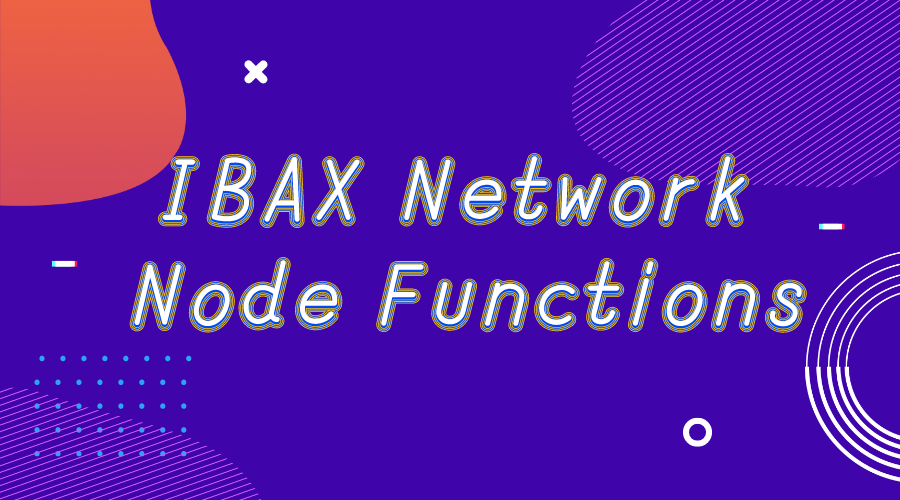
IBAX Network Node Functions
There are five node types in the IBAX platform, they are Honor Node, Guardian Node, Mint Node, Sub Node, CLB.
Honor Node
Honor Node is the most important node in the IBAX platform and is responsible for: receiving transaction requests, verifying transactions, packaging blocks, and reviewing block contents.1、Receiving transaction requests: The transaction requests in the IBAX platform are received by Honor Nodes around the world and synchronized to other Honor Nodes around the world through a broadcast mechanism, which ensures that each transaction is received accurately and processed sequentially in an orderly manner.
2、Verifying transactions: The IBAX platform uses the ledger model to verify transactions by executing public key verification (the issued transaction has been encrypted by a private key) and then verifying whether the fund balance meets the amount in the transaction, after the contract is verified correctly this transaction will be written to the block and packed onto the chain.
3、Packing blocks: Verification completed transactions will be packed into blocks, signed and confirmed by Honor Node and then synchronized to other Honor Node nodes around the world.
4、review block content: IBAX platform uses a double verification mechanism, based on the principle of distrust, each block will be independently verified by all Honor Node worldwide, only more than 51% of Honor Node nodes certified under the block can pass the review, otherwise it will be regarded as invalid blocks.
Guardian Node is an important node for distributed storage on the chain, guarding the integrity of the IBAX platform and a candidate for Honor Node, so to become an Honor Node you must first. become a Guardian Node.
Guardian Node
Guardian Node will actively fetch blocks on the chain to keep the data consistent with the main chain, and to reward this behavior, the IBAX platform will give the Guardian Node a block bonusMint Node
Mint Node is responsible for the token minting function of the IBAX platform, providing the platform with token liquidity.Sub Node
If you want to transfer some of your private data to someone on the chain, you can both create a Sub Node and complete the transfer of the content via the P2P transfer protocol. This action will be reflected in the chain, but the content of the data is not known to the outside.Imagine if you have some important data that you need to transmit to a friend in another country, through an insecure network transmission method, your data is possible to be intercepted. If you transmit through the Sub Node of the IBAX platform, you can use each other's public key to encrypt, and then decrypt and read the file through his private key. This process can be recorded on the chain, proving that you have completed the transmission of data between you, but the content of the data will not be known to the outside world.
CLB
Some blockchains call the off-chain data interaction function an "Oracle" and the CLB has a part of this feature, but we don't call it that because the CLB is much more than that.For cross-chain support. Cross-chain is classified as data cross-chain and asset cross-chain, most of the current cross-chains are asset cross-chain and done in a centralized way (e.g. DeFi), which is not aligned with the blockchain-based on the principle of distrust. This is only a transitional solution.
Data cross-chain is the ultimate solution for perfecting blockchain applications. Imagine if it was possible to read daily weather information, Bloomberg's stock trading information, daily email messages within the chain, what could be impossible to accomplish with blockchain applications?
CLB sets up external data sources as trusted sources by authenticating them through on-chain contracts. Data requests from within the ecosystem will be audited, in this way building a data bridge between the inside and outside of the blockchain, and the CLB is the "bridge"